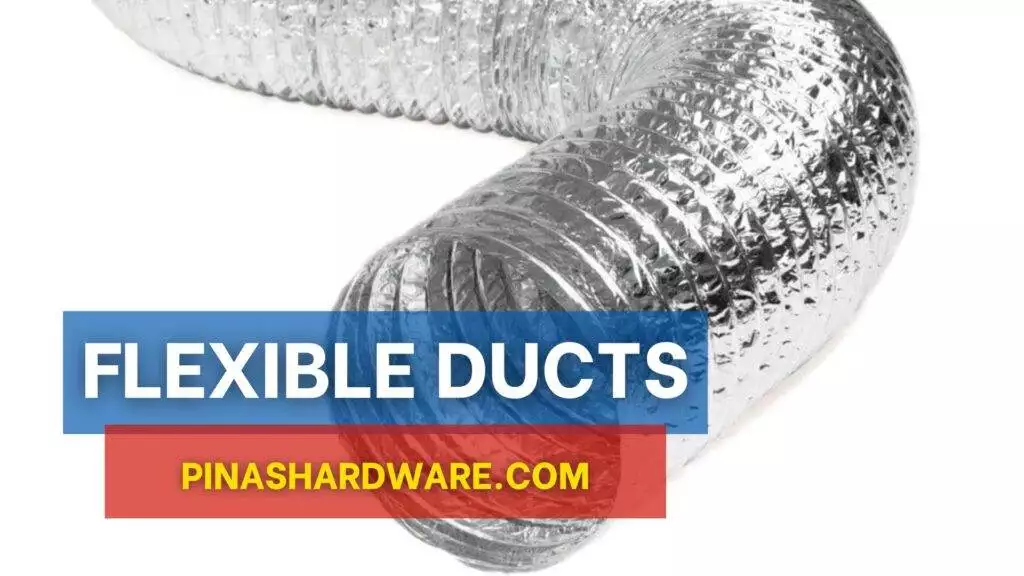Flexible ducts are a form of ductwork used in HVAC systems to promote ventilation and airflow in buildings. Its exterior shell is malleable and may buckle to accommodate different installation configurations. It is composed of sturdy materials, such as plastic or metal. Insulation usually exists within the outer shell to minimize heat transmission and increase energy utilization. When stiff ducting is unfeasible or when limitations in space need a more flexible alternative, flexible ducts are frequently utilized.
Flexible Ducts Prices
Flexible duct prices vary depending on its brand and size. Its price ranges from ₱283.68 to ₱575.00.
| Details | Sizes | Prices |
| OEM | 4 inches | ₱283.68 |
| OEM | 5 inches | ₱343.76 |
| OEM | 6 inches | ₱356.08 |
| Tailee | 4 inches | ₱475.00 |
| Tailee | 5 inches | ₱575.00 |
| Boston Bay | 4 inches | ₱395.00 |

Advantages of Flexible Ducts
Flexibility – The ability to move around and bend gives flexible ducts the ability to go past obstructions, corners, and other anomalies in the building’s construction. They may be used for a variety of HVAC system installations because of their adaptability.
Easy Installation – Flexible ducts are generally simpler to operate and assemble than stiff ducting. Due to its lesser weight, installation requires less work and labor, which might result in lower labor expenses.
Space Efficiency – Flexible ducts provide a space-saving option in scenarios when there is a shortage of space, such as when retrofitting HVAC systems into already-existing buildings or cramped construction sites. Their capacity to flex into small areas optimizes the amount of space that can accommodate additional parts or structures.
Reduced Air Leakage – Flexible ducts are frequently made with airtight construction, which lowers the possibility of air leaks and raises the efficiency of HVAC systems overall. This aids in preserving even ventilation and temperature regulation across the structure.
Disadvantages of Flexible Ducts
Possibility of Damage – Unlike rigid ductwork, flexible ducts may be extra vulnerable to damage, particularly since they are improperly supported or if sharp items pierce the outer layer. Damage may result in reduced airflow, leakage, and system performance.
Limited Durability – In elevated temperatures or elevated settings, the materials employed for flexible ducts could not be as resilient as those utilized in rigid ducting. The ducts may become less flexible with time, which could cause them to sag or collapse.
Airflow Restrictions – Airflow can be restricted by sharp bends or kinks in flexible ducts, which lowers system effectiveness and reliability. To guarantee that the ducts sustain even airflow throughout the system, correct setup is essential.
Video of Flexible Ducts
FAQs
Can flexible ducts be used with any kind of HVAC system?
Many HVAC systems may utilize flexible ducts; however, those that necessitate elevated temperatures or high pressure cannot.
How should my HVAC system’s flexible ducts be sized?
To determine appropriate sizing determined by airflow requirements and building layout, consult HVAC specialists or sizing recommendations such as ACCA Manual D.
Can lengthy duct lengths be completed with flexible ducts?
Yes, however for best results, take into account airflow resistance, support needs, and occasionally a combination of rigid and flexible ducts.
For optimal performance, how should flexible ducts be installed?
Install by-product guidelines, making sure there is enough insulation, securing connections, and avoiding bends.
Are mold and mildew growths common in flexible ducts?
Yes, if it’s tainted with organic materials and moisture; therefore, adequate moisture management and insulation are essential.


